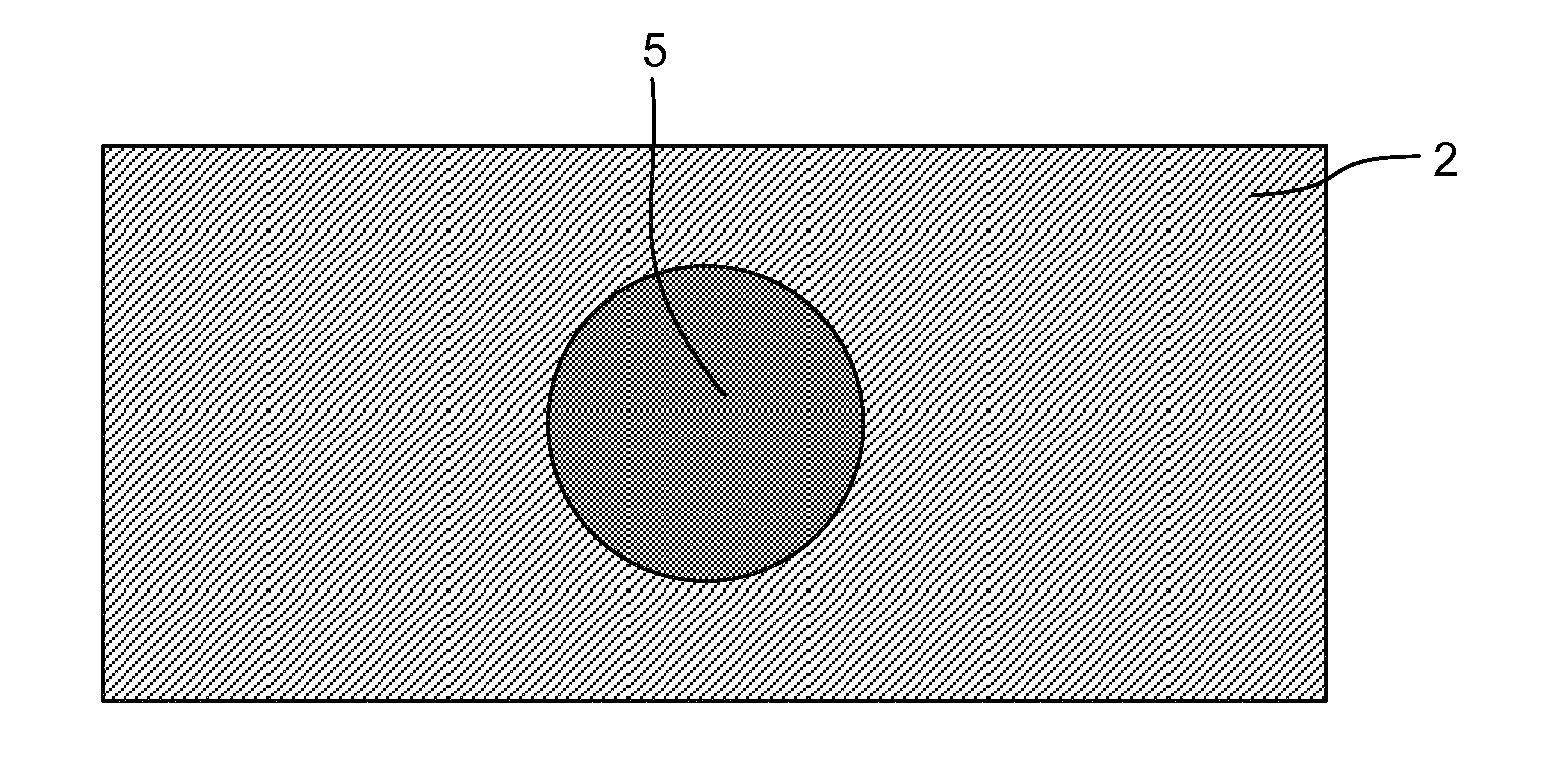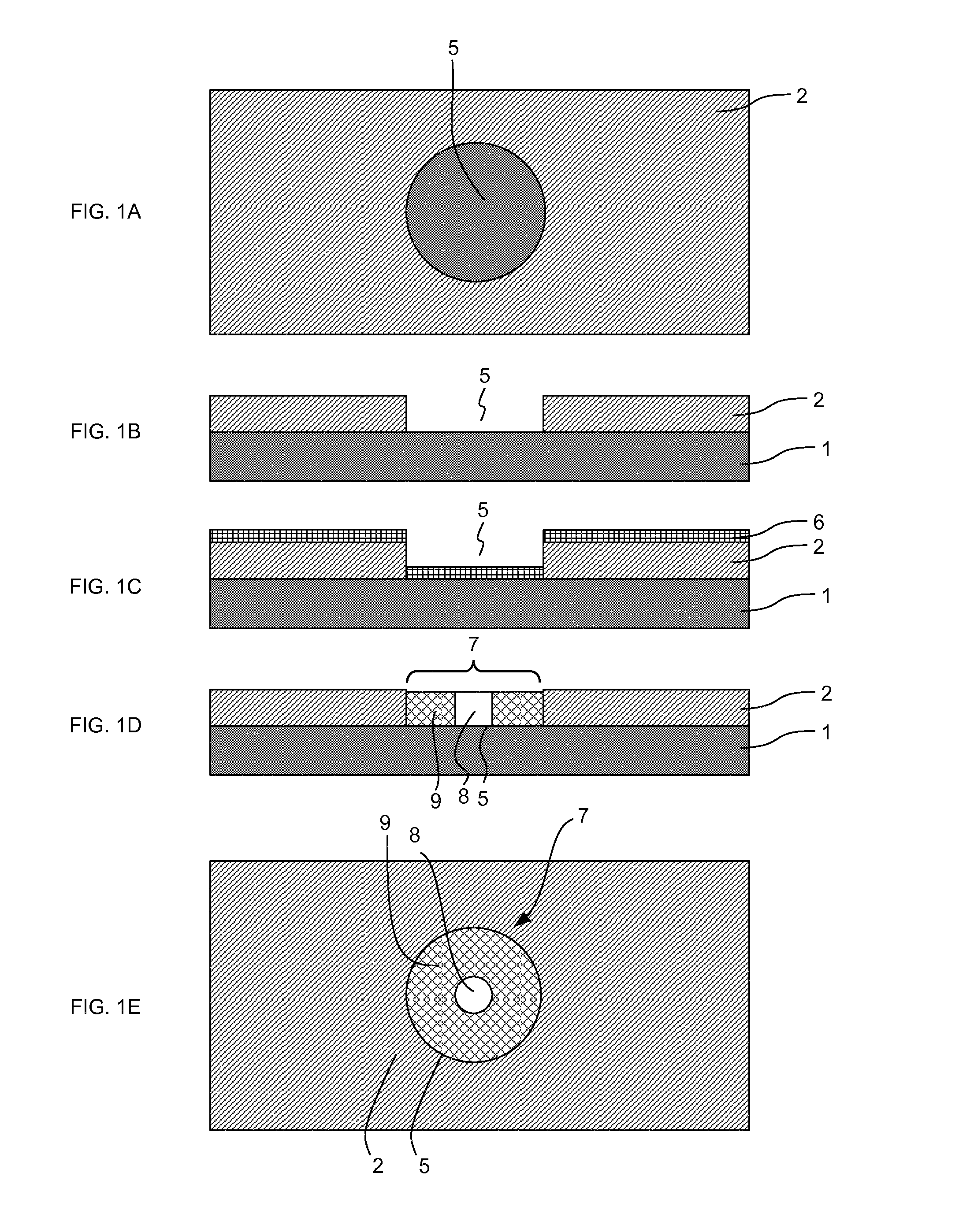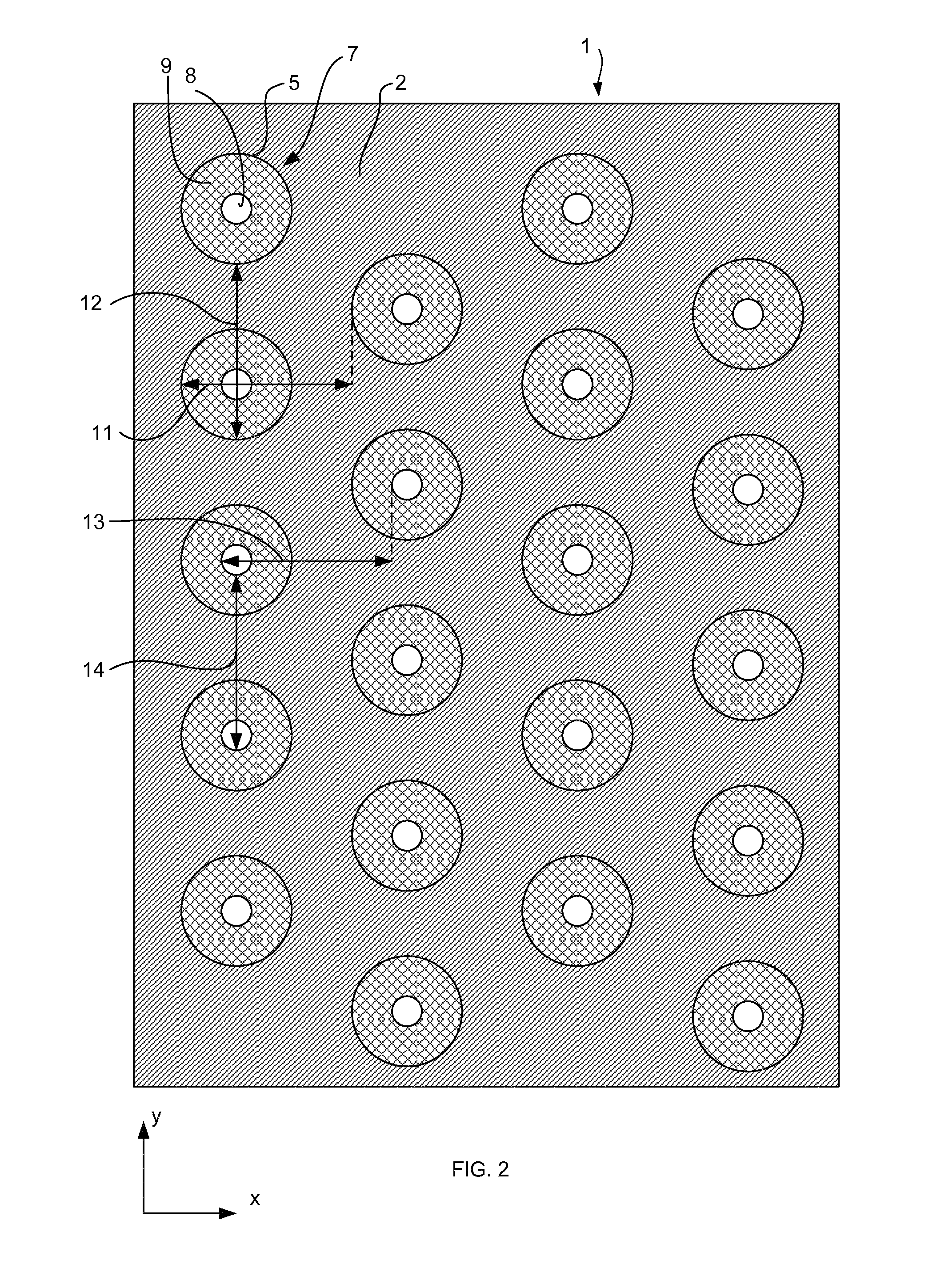Method of simulating formation of lithography features by self-assembly of block copolymers
- Summary
- Abstract
- Description
- Claims
- Application Information
AI Technical Summary
Benefits of technology
Problems solved by technology
Method used
Image
Examples
Embodiment Construction
[0065]FIGS. 1A and 1B show, in plan view and cross-section respectively, part of a substrate 1 to which a lithography process using self-assembly of BCP is applied. An anti-reflection coating may be present on the surface of the substrate 1. The anti-reflection coating (if present) may be an organic material, such as, for example, ARC 29, from Brewer Science Inc. of Rolla, Mo. The anti-reflection coating may be an inorganic material such as, for example, SiC or SiON. A neutral layer may be provided on the anti-reflection coating. A layer of resist 2 is applied to the substrate 1. The layer of resist 2 may, for example, be a photo-resist. The layer of resist 2 is patterned with a contact hole resist recess 5. The contact hole resist recess 5 may be formed by photolithography, imprint lithography or another lithographic process.
[0066]In FIG. 1C, a BCP layer 6 has been deposited onto the substrate 1 and the resist 2. The BCP layer 6 is shown with a uniform thickness within the resist r...
PUM
 Login to View More
Login to View More Abstract
Description
Claims
Application Information
 Login to View More
Login to View More - Generate Ideas
- Intellectual Property
- Life Sciences
- Materials
- Tech Scout
- Unparalleled Data Quality
- Higher Quality Content
- 60% Fewer Hallucinations
Browse by: Latest US Patents, China's latest patents, Technical Efficacy Thesaurus, Application Domain, Technology Topic, Popular Technical Reports.
© 2025 PatSnap. All rights reserved.Legal|Privacy policy|Modern Slavery Act Transparency Statement|Sitemap|About US| Contact US: help@patsnap.com



